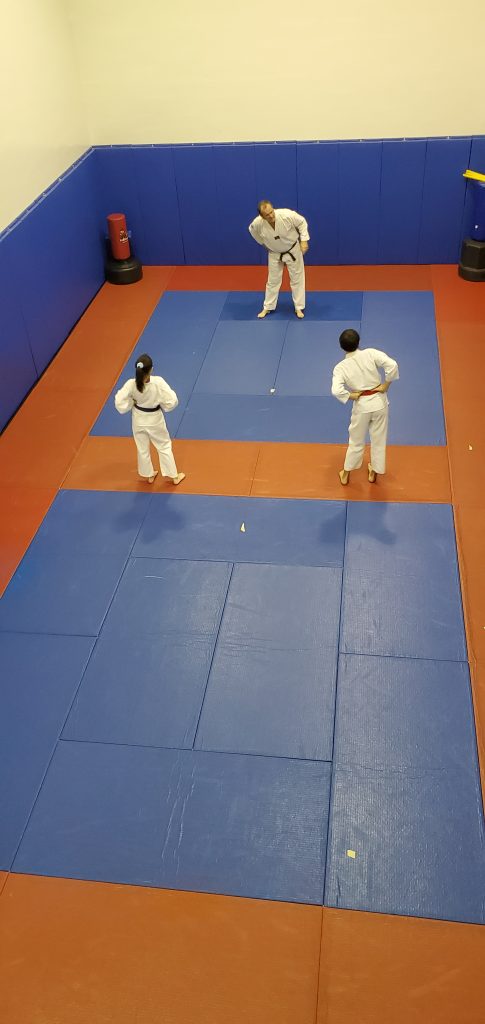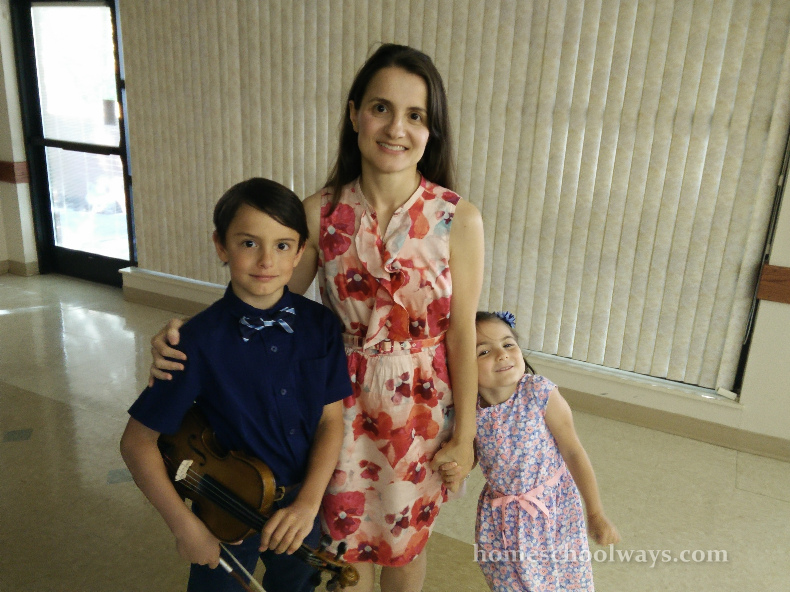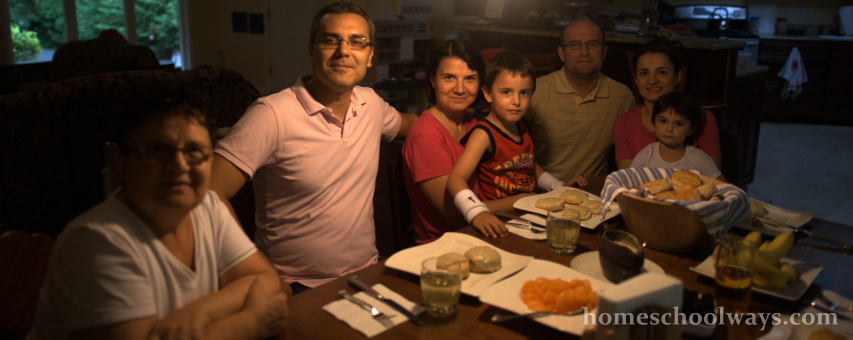This summer, DS was finally able to take part in the Junior Ranger Program organized by the Great Smoky Mountains National Park. One must be at least five to start in one of the age groups available. I have been looking forward to this program for about 3 years. Yes, I like to plan ahead.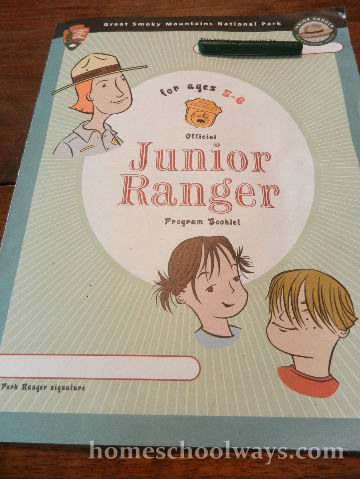
We bought the booklet and worked our way through the requirements:
1. Complete eight activities in the booklet. It took us three fifteen-minute sessions over a month. We stretched it out especially because we were busy with family visiting from overseas.
2. Attend one ranger-led program. We attended three. Just because. Plus I wanted my Not-So-Junior ranger badge, which one can get after attending – you guessed it! – three programs.
Our first event was Bear-mania. We learned there are 1,600 bears in the park, 2 per each square mile, which is a really good density. We got to touch a bear skin. I was OK with touching the fur, but my son invited me to feel its paws and claws. I hesitated. Then, I went ahead and touched those parts anyway, trying hard not to shudder. The things we do for our children…
Our second event was Retiring the Colors, a touching presentation on the Stars and Stripes which taught the children how the flag came about, how to fold the flag and what the stars and stripes stand for. They got to say the Pledge of Allegiance. Then, they all ligned up and folded the flag. And what do you know? My children knew how to stand in line – proof positive that they don’t need to go to school to learn that particular life skill. We practice at the supermarket every week, don’t we? I digress. The good news is that since this program both my children have been spotting the American flag everywhere we go.
-
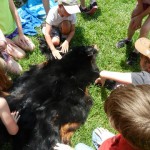
-
Bear-mania!
-

-
Retiring the Colors
-
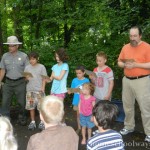
-
Yukky Animal Stuff
Our third event was Yukky Animal Stuff, a hilarious presentation on scat, skulls, and scents. When the ranger asked for volunteers to come upfront and read the Scat Rap, DS volunteered. DS stood in front of the class, alongside six others, and followed directions. What was that question about socialization again? He even read along with them from the laminated piece of paper he received. (He reads on third grade level, but that is a topic for another post.)
In all honesty, I feel the what-in-the-world-am-I-doing-with-this-homeschooling-thing fear now and then. The fear that I am “messing up my children,” “handicapping them for life,” or “ruining their education and their ability to socialize normally” – all words said to me or my homeschooling friends by well-meaning family members and friends. But then I attend events like those just mentioned above and I relax. My children interact well with people of all ages and they are not afraid of public speaking. Breathe.
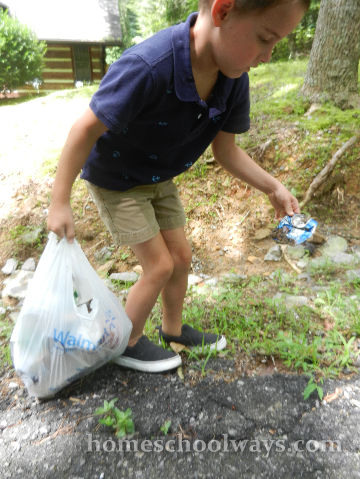 3. Pick up one bag of litter. We walked around our neighborhood and picked up trash from the ditches or the road itself. It took about 30 minutes. We filled up two shopping bags, especially from the ditches around overnight rentals. People like to party and throw their beer bottles in the ditches – that’s one of the lessons of the day. Besides discussing hygiene and proper trash disposal, we talked about the dangers of alcohol consumption. Again.
3. Pick up one bag of litter. We walked around our neighborhood and picked up trash from the ditches or the road itself. It took about 30 minutes. We filled up two shopping bags, especially from the ditches around overnight rentals. People like to party and throw their beer bottles in the ditches – that’s one of the lessons of the day. Besides discussing hygiene and proper trash disposal, we talked about the dangers of alcohol consumption. Again.
4. Take booklet to a Smokies park ranger at any visitor center. DS was so excited to get his badge! He got sworn in and received a certificate, as well.


-
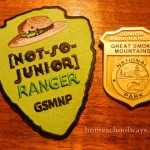
-
Badges
-

-
Signing the Certificate
As we walked away from the Sugarlands Visitor Center toward the car, my son asked me: “Did I earn it, mommy?” pointing to the certificate in his hands. We have been talking with him about how fun it is to receive gifts and how it is even more fun to earn things. I reassured him he earned it and that mommy was proud. Because I am.
